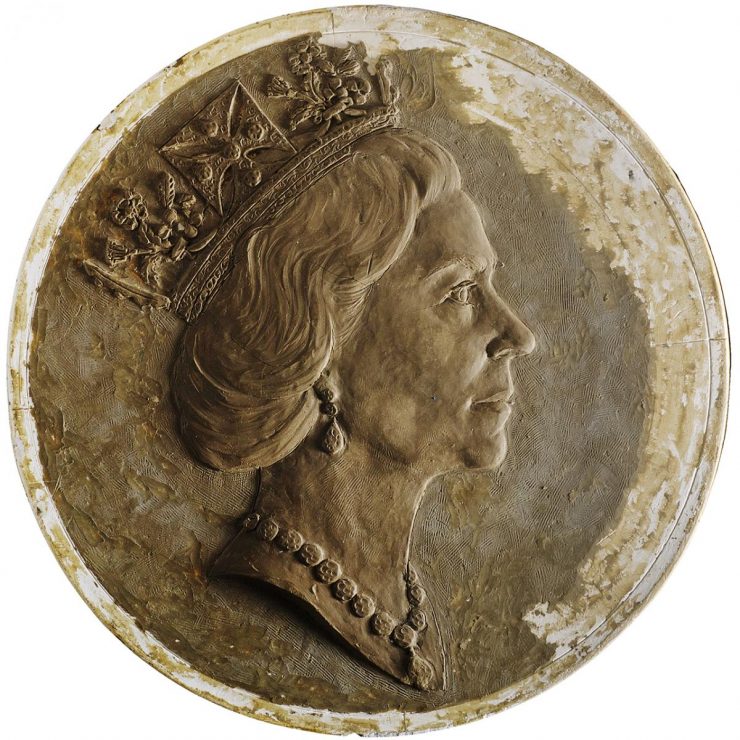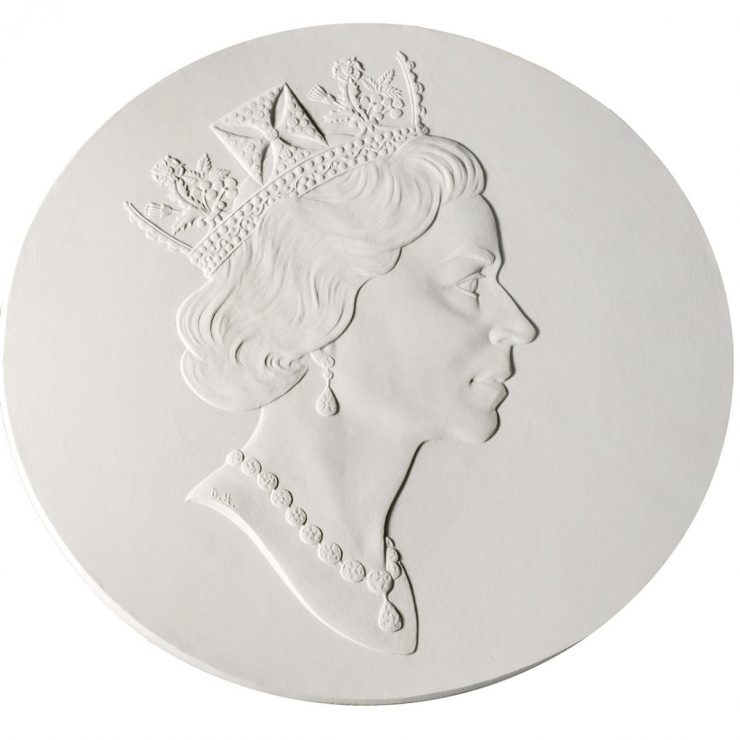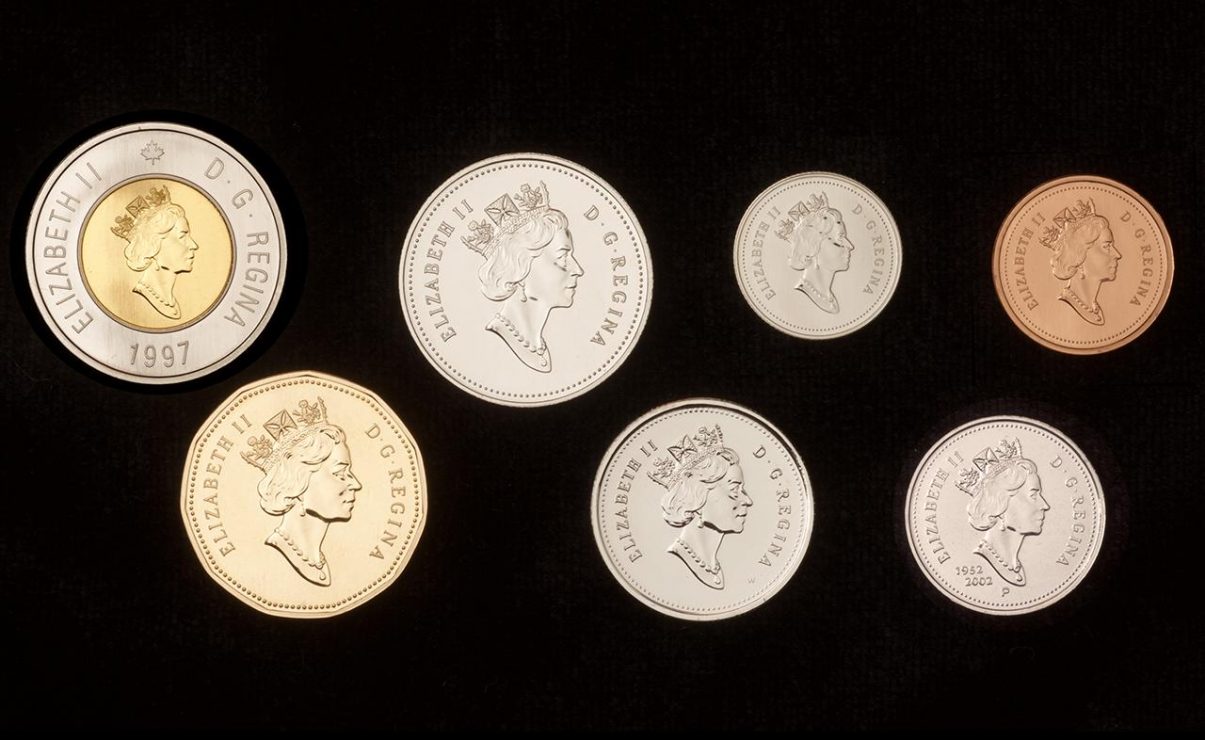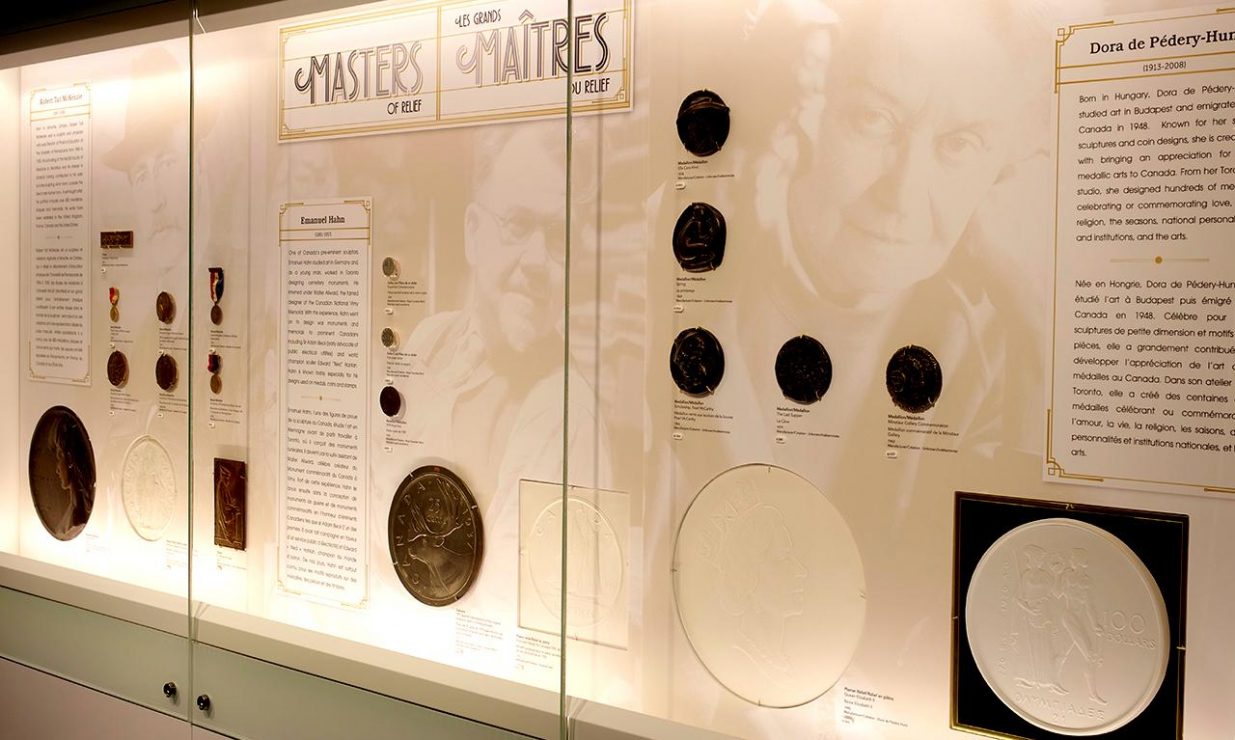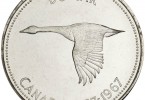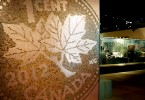Sculptor Dora de Pédery-Hunt
You will not see Dora de Pédery-Hunt’s signature on any coin, but you will see her initials on the Queen’s shoulder.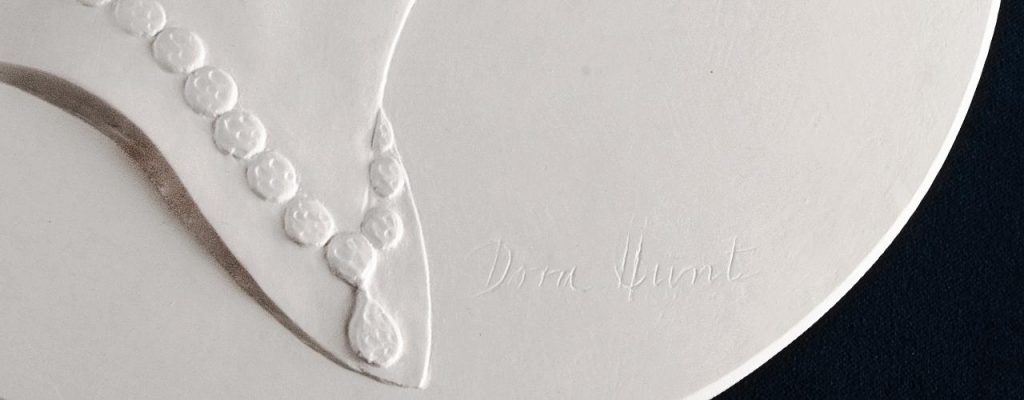
Limited Edition plaster reproduction of working model, #21 of 275. (NCC 2009.020.003)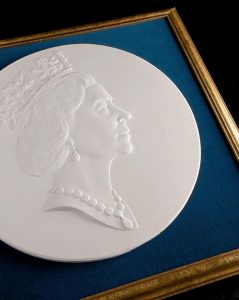
Dora de Pédery-Hunt’s work is as familiar as the change that jingles in your pocket. In all likelihood, you have come in contact with her work while using coins to pay for your morning cup of coffee. Dora de Pédery-Hunt was the first Canadian artist to design and sculpt an effigy of Queen Elizabeth II for coinage. Incidentally, this was the first time someone other than a British citizen had designed an official depiction of Queen Elizabeth II for this purpose.
When the Royal Canadian Mint (RCM) selected Dora’s design, she painstakingly began working on a clay model. All of the details had to be carefully considered, as the depth of the relief had to be suitable for producing coins. This model was then captured in plaster, where additional refinements could be made. Any errors could easily be corrected at this stage with the addition of more plaster. The size of the plaster is usually several times larger than the actual coin in order to capture all of the fine details.
At the time, there were many steps between the plaster model and the production of coins. Today, the process has been significantly refined. The plaster model is scanned in 3D and any final corrections or enhancements can be made digitally. Guided by this digital file, an engraving machine cuts the design into a piece of steel at the correct size of the coin. Known as a reduction punch, this piece of steel is then used to make the dies which will actually strike the coins. The tremendous pressure used to strike the coins wears down the dies, so the mint will periodically use the punch to create new dies.
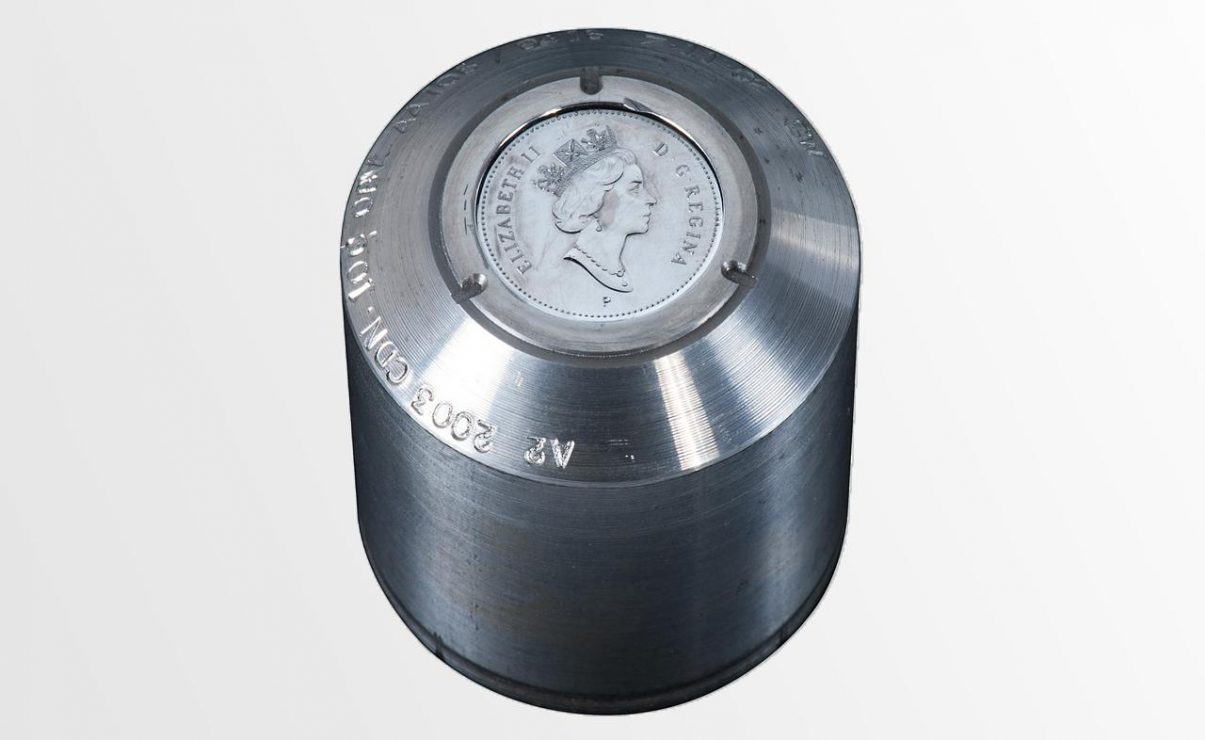
In 1999, the “P”, under the portrait on this punch, was added by the RCM to indicate a change in metal from nickel to multi-ply plated steel. (NCC 2010.058.006)
This portrait has appeared on all Canadian coins minted between 1990 and 2003.
The Museum Blog
First Artifacts to Leave the Museum: And they were big
By: Graham Iddon
Before the museum closed for renovations on 2 July, technicians began to remove the heavier artifacts in late May. First to go was the strong box. Built of ¼” thick welded steel plates, this trunk was used by the Bank of Upper Canada in Toronto between 1821 and 1866.
Director’s chair : “I don’t know why you say goodbye, I say hello.”
By: Ken Ross
Most of us know the first part of Alexander Graham Bell’s take on opportunity: “When one door closes, another one opens…” What we often don’t recall is the second half of that quote, where he says: “…but we so often look so long and regretfully upon the closed door, that we do not see the ones which open for us.”
Remembering Alex Colville (1920-2013)
By: Raewyn Passmore
The Staff of the Currency Museum was saddened to learn of the passing of artist Alex Colville who died on 16 July at his home in Wolfville, Nova Scotia. He was 92. One of Canada’s most celebrated painters, Colville is not as well-known as a sculptor but if you look carefully through your pocket change you might just find an example of his work.
Farewell to the Currency Museum c.1980
By: Graham Iddon
The roots of the Currency Museum go back to 1959 when the then Governor of the Bank of Canada, James Coyne, proposed the idea of establishing a currency collection that would reflect the colourful monetary history of Canada. By the time the go-ahead was given in 1963 by Coyne’s successor, Louis Rasminsky, the collection’s mandate had been expanded to include world monetary history, banking and production artifacts and a numismatic library.
